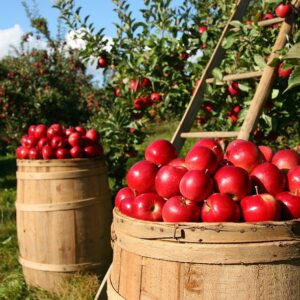
Root vegetables (such as potatoes, carrots, beets, turnips, sweet potatoes, parsnips, radishes, ginger etc.) can be frozen using a variety of techniques:
- Blanching: Using this technique, you boil the vegetables for a limited period of time before plunging them into freezing water to stop the cooking. As a result the vegetables’ texture and colour are preserved while being frozen.
- Raw packing: In this technique, the veggies are packed into freezer bags or containers while still being raw, washed and peeled. Although this process is quick and simple the texture of the vegetables may degrade while they are defrosting.
- Steam blanching: This technique is similar to traditional blanching but uses steaming rather than boiling to cook the veggies. More of the flavour and nutrients of the vegetables are preserved as a result.
- Puree: Some root vegetables including beets, carrots and sweet potatoes can be puree and store for use in soups or baking in the future.
- Dry packing: In this technique, the veggies are cut or diced, then spread out in a single layer on a baking sheet and frozen until solid. For long-term storage, the veggies can be moved from the freezer to a freezer bag or container. As the texture may not be as suited for usage when raw this approach works best for root vegetables that will be used in prepared meals, such as soups, stews or casseroles.
- Marinate: Some root vegetables, such as carrots, beets or radishes, can be frozen after being marinated in liquids like oil, vinegar or other liquids and used later as a garnish or in salads.
Whatever method you use, it’s critical to label, date and eat the frozen vegetables within 6–12 months for optimal quality.
It’s vital to remember that some root vegetables such radishes, turnips and jicama, cannot be frozen successfully. The best way to eat these vegetables is fresh because freezing them might turn them mushy and tasteless.
It’s also crucial to remember that thawing frozen vegetables gradually and gently requires putting them in the fridge overnight or running water. Do not thaw them at room temperature since this can encourage the growth of bacteria.
Few Precautions
In order to preserve the freshness and quality of frozen root vegetables, you need take the following precautions:
- Clean and prepare vegetables properly: Ensure that vegetables are well cleaned and prepped before freezing to get rid of any dirt or debris. Vegetables should be cut into consistent pieces to ensure even freezing and thawing.
- Blanching: Vegetables should be blanched before freezing to deactivate enzymes that could cause colour and flavour loss.
- Cool down rapidly: After blanching, it’s crucial to swiftly cool the veggies to stop the cooking process and maintain the vegetables’ colour and texture.
- Thoroughly dry: Vegetables should be completely dry before freezing to avoid the development of ice crystals.
- Use airtight containers: To preserve veggies, use airtight containers or freezer bags.The vegetables will stay fresh for a longer time and help prevent freezer burn.
- Label and date: the frozen vegetables so that you will know when they were frozen and can utilise them before they expire.
- Thawing: To avoid bacterial growth, thaw frozen vegetables slowly and gently in the refrigerator or under running water. They shouldn’t be thawed at room temperature.
- Use frozen vegetables within 6–12 months: For maximum quality, use frozen vegetables within 6–12 months.
There are various advantages to Freezing root vegetables:
- Convenience: You may enjoy root veggies even when they are not in season by freezing them so that you always have them on hand.
- Economical: You can reduce the cost of your food bill by freezing root veggies when they are in season and reasonably priced.
- Nutrient preservation: Freezing can assist to keep many of the vitamins and minerals in root vegetables, so you can still benefit from their nutritious value even when they aren’t in season.
- Flavor preservation: Freezing can help root veggies retain their flavour and texture so you can continue to eat them even after they have been frozen.
- Less waste: Since frozen root veggies can be used as needed rather than bad product being thrown away, freezing root vegetables can help minimise food waste.
- Variety: You can increase your cooking and meal-planning variety by freezing a variety of root veggies.
- Saving time: Pre-cut and frozen vegetables can help you prepare meals faster.
Although the quality of frozen veggies may not be as good as fresh vegetables and the texture may alter after freezing, this method might still be a useful one for preserving them for later use.









